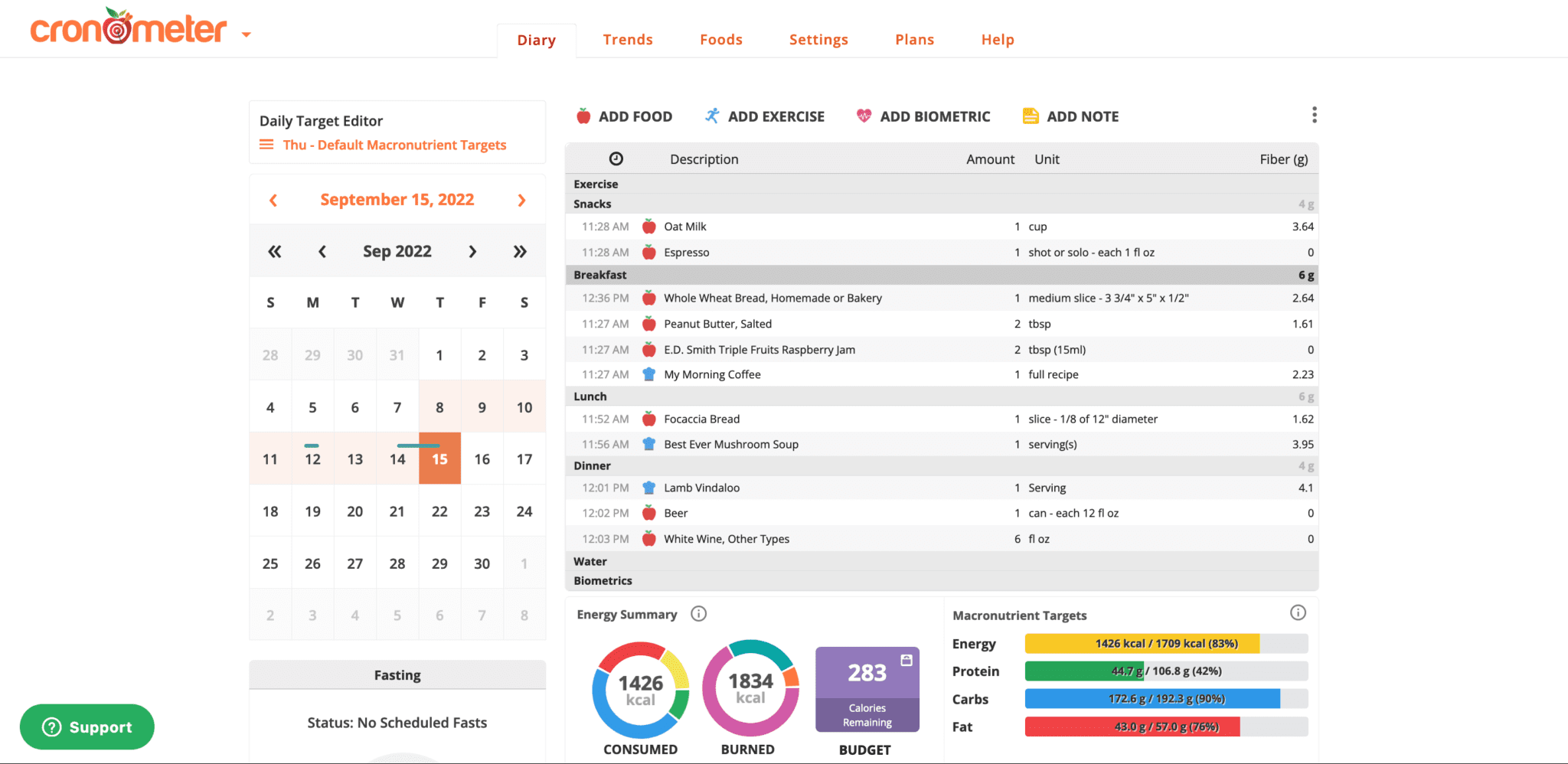Today we are launching a new & improved Cronometer!
A refresh of our brand has been on our radar for years, but product development had always remained a priority. This year, we decided going through this valuable exercise was long overdue!
Guided by a desire to do business better, we wanted to align our product quality with our image for Cronometer products and communicate it effectively across every channel.
For those of you who have come to know and love the Cronometer brand, not to worry, the new brand and visual identity maintain a lot of its previous integrity just with a refreshed, modern look and feel.
Our Mission Remains The Same
For the past 11 years, our mission here at Cronometer has remained the same:
To empower people to reach their health and lifestyle goals by providing them with the most accurate health tracking app on the market.
As with our core values:
- Rigorous in science
- Impartial in diet ideologies
- Conscientious and respectful of our influence over users’ health
- Honest, transparent and trustworthy
- True to ourselves in our growth
- Compassionate and user-focused in our service and design
What's New
1. A New Cronometer Logo
With the help of the fine folks over at Tiller, we have simplified and modernized the Cronometer logo. The new logo can easily be used across many design mediums. This means you’ll be looking for a new app icon when opening Cronometer on your phone or tablet.
We’ve also introduced new logos for our Cronometer Gold and Cronometer Pro products.

2. New Colours & Visual Identity
While we couldn’t possibly ditch our favourite colour, orange, we have chosen to add a couple more colours to the brand roster in order to make the app more accessibility friendly and easier to use for any vision-impaired users.
In alignment with one of our core values, rigorous in science, we’ve also introduced a couple fun visual identity pieces, in which our design team refers to as our ‘data dots’ and ‘data rings’. You’ll see these peppered across many visual touch points.


3. App Redesign
In the latest version of both the web and mobile apps, you’ll notice a few changes. Both apps have received a fresh user interface polish, which includes our new brand colours and fonts, making the app easier to navigate, the data easier to digest and more accessibility friendly.
On mobile, it is important to note that your settings will now be accessed via the top right corner of your dashboard (see below for details), instead of via the navigation buttons along the bottom.
On the mobile app
On mobile, you’ll notice that the ‘trends’ button along the bottom of the app is no longer there. You will now find your Nutrition Report and Charts on the ‘Discover’ tab.



On the web app
On the web app, our developers have made a significant overhaul to the code so we’ll now be able to fix bugs and roll out new features, faster.
We’ve moved the navigation from the top and horizontal, to the left side. A vertical navigation saves space and is easier for users to navigate. For gold users, we’ve also added diary group subtotals on the web app to match the mobile app.
Our Cronometer Pro users will also notice some changes. For a detailed breakdown on what those are, click here.
Old Us

New Us!

4. Introducing A New Dashboard Feature
On both our web and mobile app, we’re launching a dashboard area!
For the initial launch, users will be able to choose to show their energy history, their fasting history and/or their weight change chart. The dashboard will also show relevant news and updates, is fully customizable and we plan to add more dashboard functionality in the near future.
Follow these links for detailed instructions on how to use the dashboard on web and on mobile.


What's Next?
Today our brand reflects the innovative and invaluable product that has helped so many people reach their health goals and uncover their nutrition.
For those of you on the iOS app, you can update to the latest version of the app today on the Apple App Store. Android will be following a phased roll out, and should have access to the new app by the end of the day (PST) on November 15, 2022.
For our web application, the latest version is live and you can access your exact same account here.
We want to thank all of our wonderful users in getting Cronometer to where it is today, we are thrilled that over 6 million of you have chosen us to help you live healthier and happier lives.
As always, if you have any questions or need help navigating any of these changes, please reach out to support@cronometer.com.
FAQ's
A compilation of some frequently asked questions we’re seeing about the changes.
We are listening to your feedback and are currently working on some solutions to increase the information density on the new web app. We have already made some adjustments, but please stay tuned for more changes in the near future.
In the meantime, please try zooming out on your browser or if you’re a Gold subscriber, collapse your diary groups. This will allow you to see more information on the screen.
The option lives under the ‘Advanced Info’ section. Toggle that down during the recipe creation to edit your cooked recipe weight.
Updated! We’ve recently put the calendar month view back onto the diary page.
We haven’t removed the ability to use custom date ranges on your custom charts. However, if you’re looking at the two new charts on your dashboard, you will have limited date range options.
To view your custom charts, navigate to trends, then charts. In the drop down menu when selecting your date range, just scroll down a wee bit to see the custom range option.
Your nutrition report can be found by going to the Home screen and tapping ‘Report’ at the top of your screen. This will give you your nutrition averages. You can change the date range by navigating to Report Settings.
Your charts (or previously the trends section) can be found via the Home screen, then click Charts on the top of the screen.




